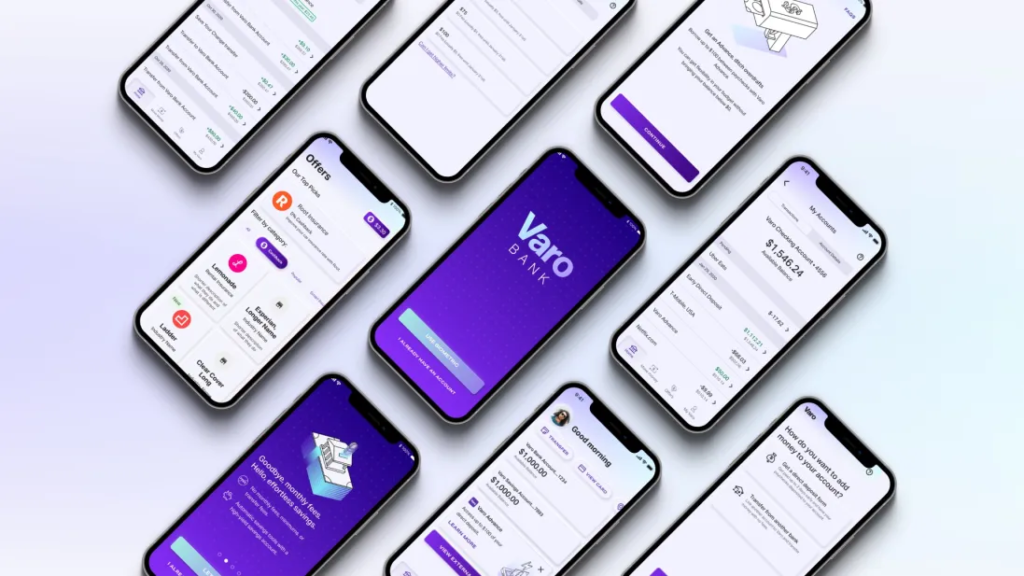Fintech startup Varo Bank, once a darling of the digital banking world, is making headlines again—this time for its latest fundraising efforts. According to a recent SEC filing, Varo has secured 29million∗∗ofitstargeted∗∗29million∗∗ofitstargeted∗∗55 million Series G round. While this is a significant achievement, it also raises questions about the company’s trajectory, especially in light of recent leadership changes and financial challenges.
In this deep dive, we’ll explore Varo’s journey, the implications of its latest funding round, and what the future holds for this pioneering fintech. Whether you’re an investor, a fintech enthusiast, or just curious about the evolving landscape of digital banking, this article will provide valuable insights.
Varo’s Fundraising Journey: A Rollercoaster Ride
The Latest Funding Round
Varo’s Series G round has so far closed at 29million∗∗,fallingshortofits∗∗29million∗∗,fallingshortofits∗∗55 million target. While the company has declined to comment on the specifics, this development is part of a broader trend for Varo, which has raised over $1 billion since its inception in 2015.
This isn’t the first time Varo has faced fundraising challenges. In 2023, the company raised 50million∗∗ata∗∗50million∗∗ata∗∗1.85 billion post-money valuation, significantly lower than its 2.5billionvaluation∗∗duringits∗∗2.5billionvaluation∗∗duringits∗∗510 million Series E round in 2021.
What’s Behind the Fundraising Challenges?
Several factors could explain Varo’s struggles to meet its fundraising goals:
- Market Conditions: The fintech sector has faced headwinds in recent years, with investors becoming more cautious amid economic uncertainty.
- Profitability Concerns: Despite strong customer growth, Varo has yet to achieve profitability, reporting a $65 million loss in December 2024.
- Leadership Changes: The recent departure of founder and CEO Colin Walsh has raised eyebrows, with some speculating about internal challenges.
Leadership Shakeup: A New Chapter for Varo
Colin Walsh Steps Down
In a surprising move, Colin Walsh, Varo’s founder and longtime CEO, announced his resignation in late 2024. Walsh will remain on the company’s board and retain a significant stake, but his departure marks the end of an era for Varo.
Enter Gavin Michael
Walsh’s successor, Gavin Michael, brings a wealth of experience to the role. Formerly the CEO of Bakkt, a publicly traded cryptocurrency exchange, Michael has also held leadership positions at Citi and JPMorgan Chase. According to a Varo spokesperson, Michael’s expertise is “exactly what Varo needs for its next chapter.”
Was Walsh Forced Out?
Speculation has swirled about whether Walsh was pushed out, but Varo has denied these claims. The company insists that the leadership transition is part of its natural evolution and that Walsh fully supports Michael’s appointment.
Varo’s Unique Position in the Fintech Landscape
The First All-Digital National Bank
Varo made history in 2020 by becoming the first all-digital nationally chartered U.S. consumer bank. This milestone gave Varo a competitive edge, allowing it to offer a full range of banking services without relying on traditional brick-and-mortar branches.
Commitment to Financial Inclusion
From the beginning, Varo has positioned itself as a champion of financial inclusion, targeting underserved communities with affordable banking solutions. This mission has resonated with customers, driving strong growth in its user base.
The Path to Profitability
Despite its innovative approach, Varo has struggled to turn a profit. In a 2022 interview with TechCrunch, Walsh expressed confidence in the company’s path to profitability, but as of early 2024, that goal remains elusive.
The Road Ahead: Challenges and Opportunities

Navigating a Tough Market
The fintech sector is increasingly crowded, with competitors like Chime, Current, and Revolut vying for market share. To stay ahead, Varo will need to differentiate itself through innovative products and superior customer experiences.
Leveraging New Leadership
Gavin Michael’s appointment could be a turning point for Varo. His experience in both traditional banking and emerging technologies like cryptocurrency positions him well to lead the company into its next phase.
Focusing on Profitability
Achieving profitability will be critical for Varo’s long-term success. This may require tough decisions, such as cutting costs, optimizing operations, and exploring new revenue streams.
Expert Insights: What Industry Leaders Are Saying
We reached out to Sarah Johnson, a fintech analyst at Greenwich Associates, for her perspective on Varo’s future.
“Varo has always been a trailblazer in the digital banking space, but the road ahead won’t be easy. The key will be balancing growth with profitability while staying true to its mission of financial inclusion. Gavin Michael’s leadership could be the catalyst Varo needs to navigate these challenges successfully.”
Lessons for the Fintech Industry
Varo’s journey offers valuable lessons for other fintech startups:
- Adaptability is Key: The ability to pivot and adapt to changing market conditions is crucial for survival.
- Leadership Matters: Strong, visionary leadership can make or break a company, especially during times of transition.
- Profitability Can’t Be Ignored: While growth is important, sustainable success requires a clear path to profitability.
A Pivotal Moment for Varo
Varo Bank is at a crossroads. Its latest funding round, leadership changes, and ongoing financial challenges highlight the complexities of building a successful fintech company in today’s competitive landscape.
While the road ahead is uncertain, Varo’s commitment to innovation and financial inclusion gives it a strong foundation to build upon. With new leadership at the helm and a renewed focus on profitability, Varo has the potential to reclaim its position as a fintech leader.
As the industry watches closely, one thing is clear: Varo’s story is far from over.






